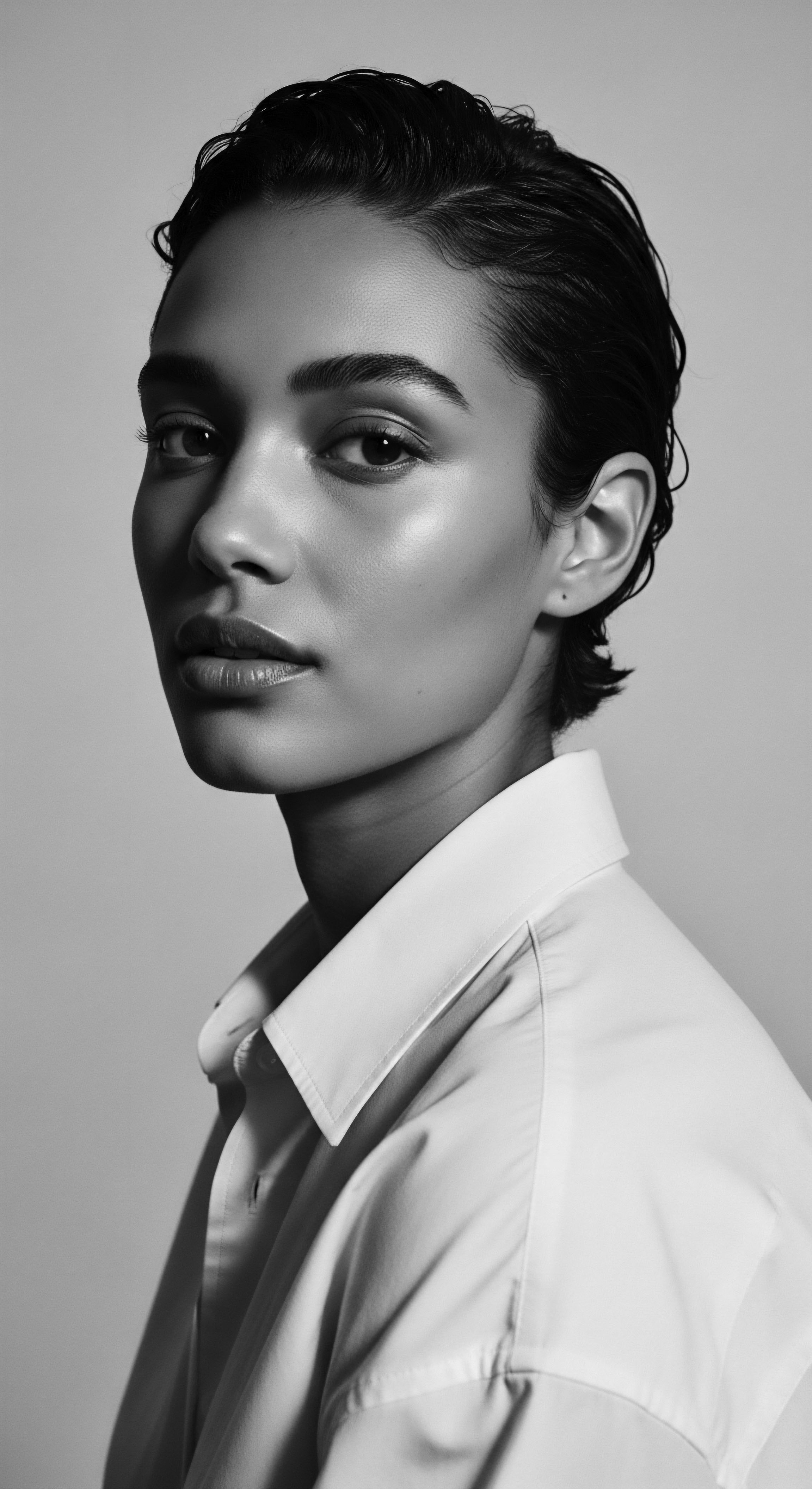
Fundamentals
The intricate relationship between the body’s internal chemical messengers and the very strands that crown our heads forms the basis of what Roothea calls the Hormonal Hair Influence. It is a profound acknowledgment that hair, far from being a mere aesthetic adornment, is a living testament to our physiological rhythms and, particularly for those with textured hair, a vibrant marker of ancestral narratives. This influence refers to the observable ways that fluctuating hormone levels within the human body can alter the growth, density, texture, and overall vitality of hair.
These changes are not arbitrary; they often echo deeper biological shifts, telling a silent story of our internal state. For textured hair, this influence carries an added layer of meaning, deeply interwoven with generational wisdom and historical practices of care.
Understanding this influence means recognizing that the hair follicle, a tiny organ nestled within the scalp, is a responsive entity. It possesses receptors that interact with various hormones, dictating the pace of growth, the thickness of each strand, and even the curl pattern. This foundational concept invites us to consider hair health not as an isolated concern, but as an integral component of holistic wellbeing, a truth long understood by our forebears.
Hormonal shifts can cause hair to become thicker or thinner, drier or more oily, or even change its curl pattern. These variations, while sometimes subtle, speak volumes about the body’s ongoing dialogue with itself.
The Hormonal Hair Influence illuminates how our body’s internal rhythms, particularly hormonal shifts, shape the very character of our hair, connecting us to a legacy of embodied knowledge.
For those with hair of coils, kinks, and waves, this sensitivity to hormonal cues can be particularly pronounced. The inherent structure of textured hair, often characterized by its elliptical follicle shape and unique disulfide bond distribution, means it responds distinctly to these internal shifts. Such responses have historically guided ancestral care practices, prompting adaptations in remedies and rituals passed down through generations. These practices, rooted in observing hair’s living responses, represent an intuitive understanding of the Hormonal Hair Influence long before scientific terms existed.
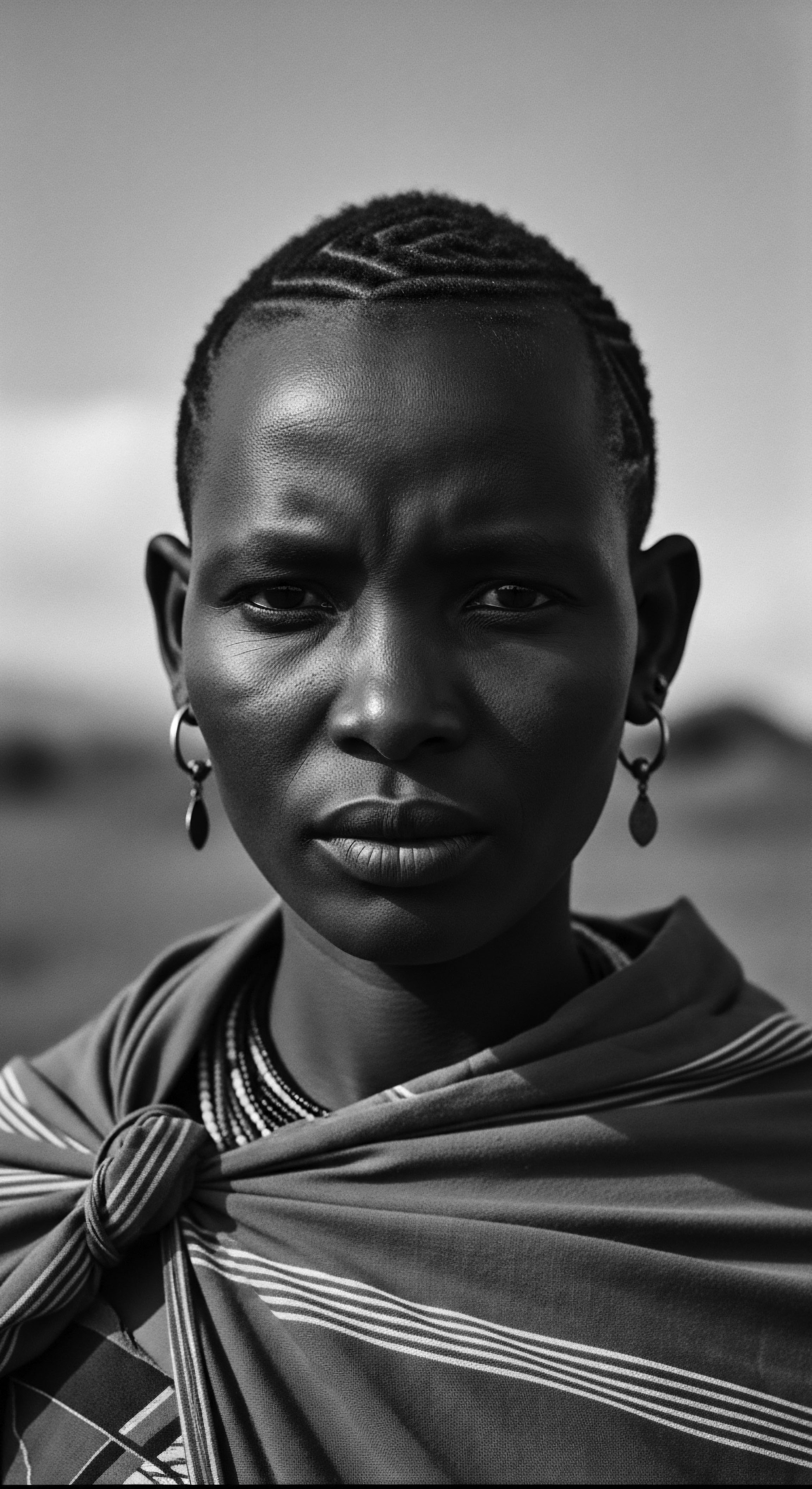
The Hair Follicle ❉ A Responsive Architect
At the heart of the Hormonal Hair Influence lies the hair follicle. This tiny, yet powerful, organ is a dynamic mini-ecosystem, continually cycling through phases of growth, regression, and rest. Hormones act as vital signals within this system. For instance, androgens, often thought of as “male hormones” but present in all individuals, play a significant role.
They can stimulate the growth of terminal hair in certain body areas while, paradoxically, contributing to hair thinning on the scalp in genetically predisposed individuals. The presence and sensitivity of Androgen Receptors within the dermal papilla cells of the hair follicle determine how these hormones will impact hair growth. This complex interplay underscores the individualized nature of hair responses to hormonal shifts.
Beyond androgens, other hormones also leave their mark. Estrogen, the primary female sex hormone, generally supports hair growth and can lead to thicker, shinier hair, particularly during periods of elevated levels like pregnancy. Conversely, a decline in estrogen, such as during the postpartum period or menopause, can result in shedding or changes in hair texture, sometimes causing curls to loosen or hair to become drier.
Thyroid hormones, cortisol (the stress hormone), and even prolactin also contribute to this intricate hormonal symphony, each playing a part in the ongoing narrative of our hair’s health and appearance. Recognizing these fundamental biological connections allows us to approach hair care with a deeper respect for the body’s inherent wisdom.

Intermediate
Stepping beyond the elemental understanding, the Hormonal Hair Influence reveals itself as a complex interplay of internal biology and external lived experience, especially for those whose hair carries the profound legacy of textured heritage. It is not simply about hormones causing hair to change; it is about how these physiological shifts interact with the unique structure of textured hair, and how communities, through generations, have observed, interpreted, and responded to these changes with practices steeped in ancestral wisdom. This intermediate understanding delves into the specific ways hormonal fluctuations manifest in textured hair and the cultural responses that have historically guided its care.
The distinctive characteristics of textured hair—its elliptical follicle shape, varied curl patterns, and tendency towards dryness due to the open cuticle structure—make it particularly sensitive to hormonal shifts. A slight alteration in the hormonal landscape can bring about noticeable differences in curl definition, moisture retention, or even the overall density of a textured crown. This inherent responsiveness means that a woman’s journey through puberty, pregnancy, and menopause often finds its echoes in the evolving nature of her hair, a phenomenon deeply recognized and ritualized in many Black and mixed-race hair traditions. For instance, the postpartum period, marked by a significant drop in estrogen, frequently brings about noticeable hair shedding and texture changes, a common experience for Black women, which traditional practices often addressed with specific nurturing rituals and ingredients.
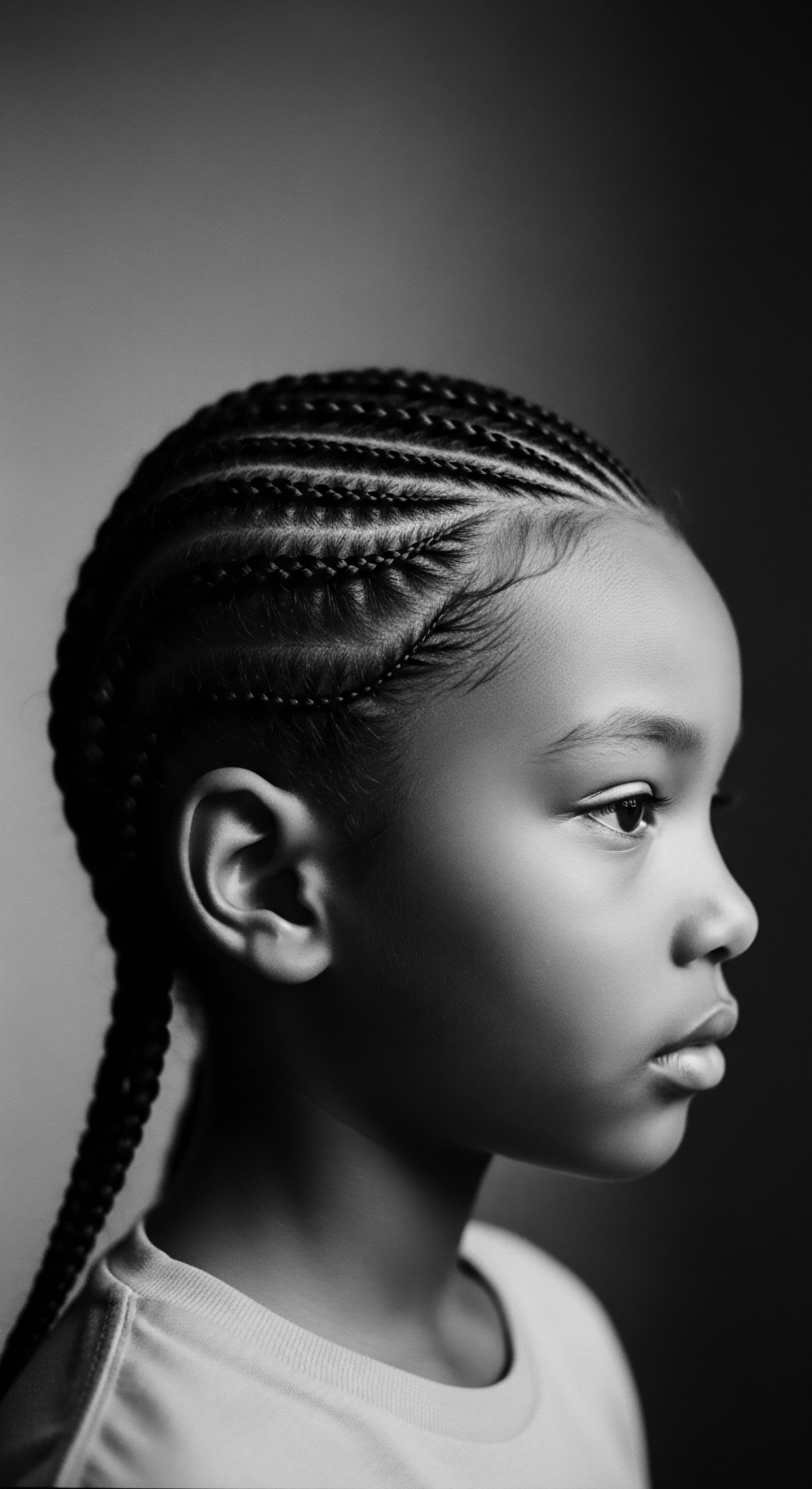
Ancestral Observances and Hormonal Rhythms
Across diverse African and diasporic communities, hair has long been a profound communicator of social status, age, marital standing, and even spiritual beliefs. Within this rich cultural tapestry, the observable changes in hair linked to life stages were often implicitly understood as reflections of internal, perhaps “hormonal,” shifts, even without modern scientific nomenclature. Traditional healers and caregivers possessed an intuitive grasp of the body’s rhythms and their manifestations in hair. They recognized, for example, the heightened sensitivity of hair during pregnancy or after childbirth, leading to specialized care routines designed to support both the new mother and her strands.
Consider the wisdom embedded in postpartum hair care practices in various African societies. These traditions often involve specific dietary adjustments, resting periods, and particular hair rituals aimed at restoring the woman’s vitality and supporting her hair’s recovery. While not explicitly framed in terms of “estrogen” or “progesterone,” these practices were, in essence, responding to the observable effects of hormonal rebalancing.
For instance, in some West African traditions, women might engage in specific hair oiling rituals using nutrient-rich ingredients like shea butter or plant-based infusions to combat dryness and support hair strength during the postpartum period. These practices underscore a long-standing understanding that hair health is intrinsically linked to the body’s internal harmony.
Hormonal shifts in textured hair are not just biological occurrences; they are historical markers, deeply embedded in ancestral wisdom and community care practices.
The significance of hair in conveying identity and social standing meant that maintaining its health was paramount, and deviations in its condition, often tied to hormonal fluctuations, were noted and addressed with reverence. This cultural lens provides a richer interpretation of the Hormonal Hair Influence, moving beyond mere biological fact to embrace the wisdom of generations who lived intimately with these bodily rhythms. The concept of “good hair” or “strong hair” within these communities often encompassed not just appearance, but a reflection of internal health and ancestral blessings, making the care of hair a holistic and deeply spiritual endeavor.
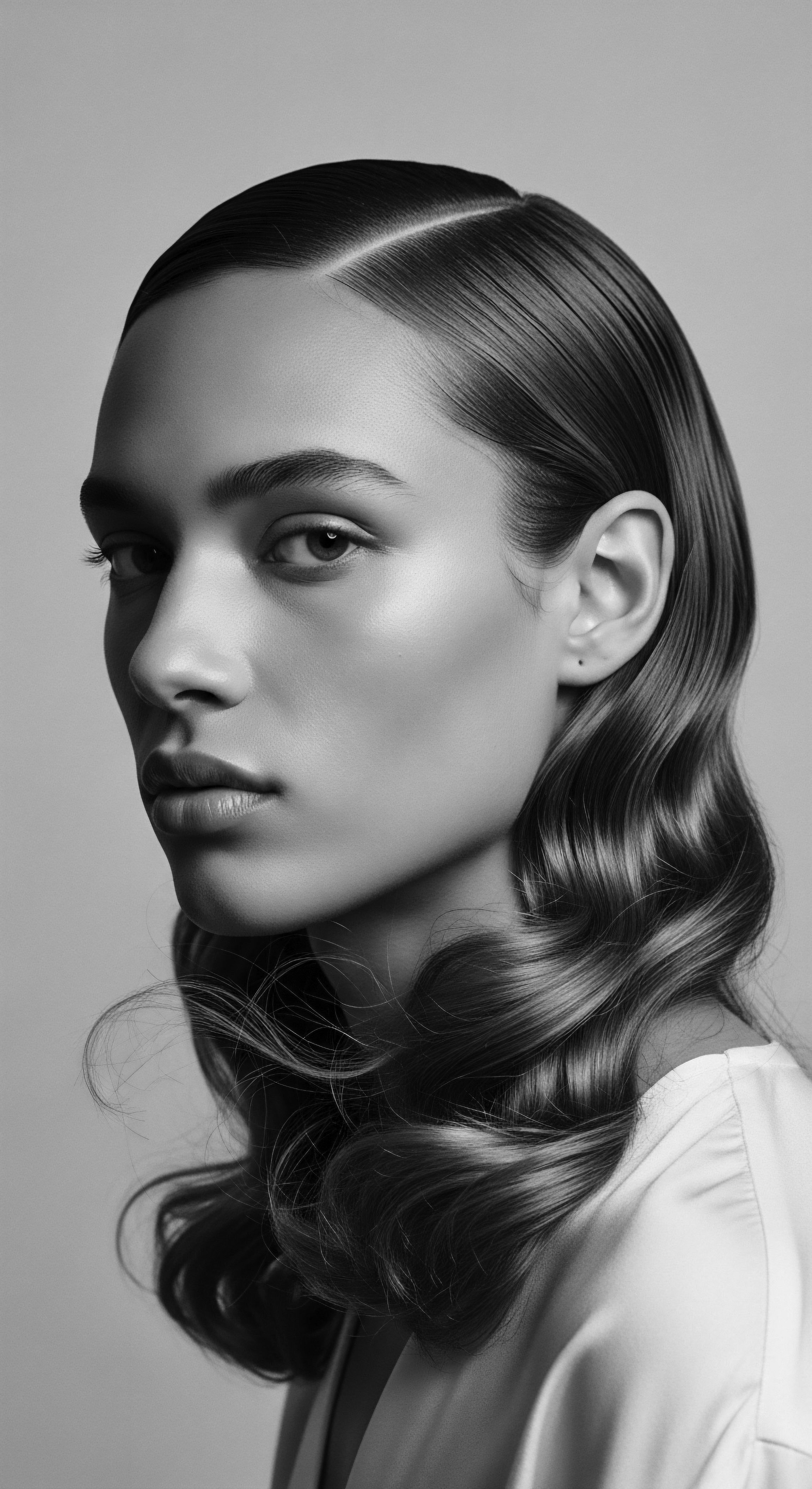
Bridging Ancient Wisdom and Modern Understanding
The dialogue between ancestral knowledge and contemporary science reveals fascinating parallels. What ancient communities understood through observation and generational transmission, modern science can now often explain at a molecular level. The concept of the Hormonal Hair Influence serves as a powerful bridge, validating the efficacy of long-standing traditional practices.
For example, the use of certain botanicals in traditional African hair care, some of which are documented in ethnobotanical surveys, might have implicitly supported hormonal balance or mitigated the effects of hormonal changes on hair. A study conducted in Lagos State, Nigeria, for instance, identified numerous medicinal plants used for various health conditions, including those that might indirectly impact hair health, though specific direct links to hormonal hair influence require further research.
The ongoing practice of hair threading among the Yoruba people of Nigeria, noted as early as the 15th century, offers another compelling example. This technique, traditionally used to stretch hair and retain length, served as a protective style, minimizing breakage. While its primary function was structural, the consistent care and reduced manipulation associated with threading would have inherently supported hair health through various hormonal shifts, offering a gentle approach when hair might be more vulnerable. This practice reflects a deep understanding of hair’s needs, adapting to its changing nature over a lifetime, a testament to the living library of textured hair heritage.
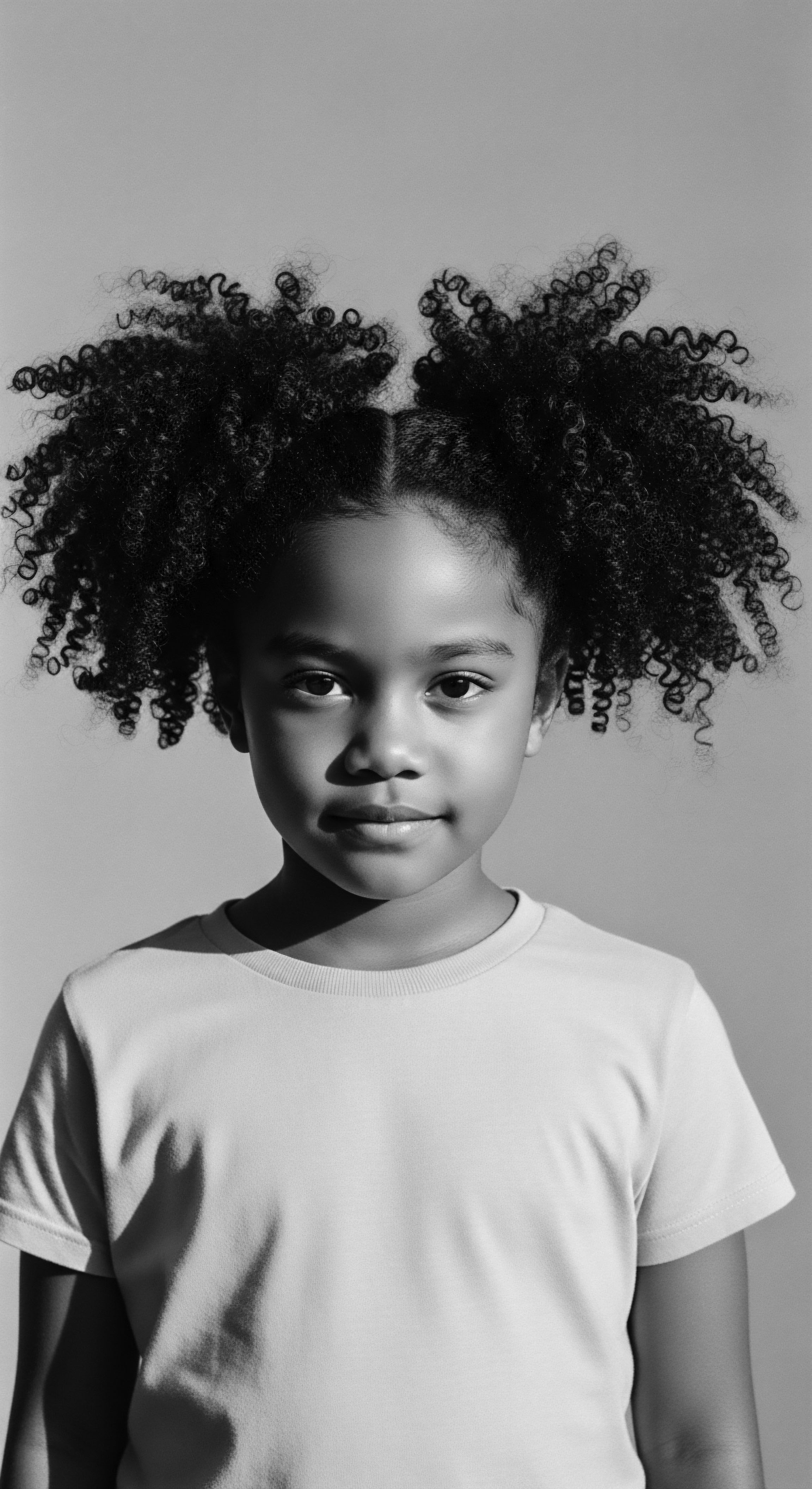
Academic
The Hormonal Hair Influence, from an academic vantage, represents the intricate and dynamic modulation of human hair follicle biology by endocrine signals, manifesting as alterations in hair growth cycle kinetics, follicle morphology, and fiber characteristics. This phenomenon is particularly salient within the context of textured hair phenotypes, where the unique structural and physiological attributes of the hair follicle render it acutely responsive to systemic hormonal fluctuations. It is a profound interplay between genetically predisposed follicular sensitivity and the biochemical environment of the body, a complex system often misinterpreted or oversimplified in broader discourse. The true meaning of this influence lies in its capacity to delineate how endogenous chemical messengers sculpt the very architecture and vitality of the hair strand, a process deeply interwoven with human development, reproductive cycles, and aging, with distinct implications for individuals of Black and mixed-race heritage.
At its core, the Hormonal Hair Influence describes a sophisticated feedback loop. Hair follicles, far from being inert structures, are complex micro-organs expressing a diverse array of hormone receptors, including those for androgens, estrogens, thyroid hormones, and glucocorticoids like cortisol. The binding of these hormones to their specific receptors within the dermal papilla cells, the outer root sheath, and other follicular compartments triggers a cascade of intracellular signaling events that directly impact the proliferation, differentiation, and survival of keratinocytes and melanocytes, thereby regulating the hair growth cycle and pigment production.
The differential expression and sensitivity of these receptors across various body sites account for the paradoxical effects of hormones; for instance, androgens stimulate terminal hair growth in axillary and pubic regions, yet paradoxically induce miniaturization and eventual loss of scalp hair in genetically susceptible individuals, a process central to androgenetic alopecia (AGA). This inherent follicular heterogeneity, a critical aspect of human hair biology, becomes particularly relevant when considering the diverse manifestations of hair changes within textured hair populations.
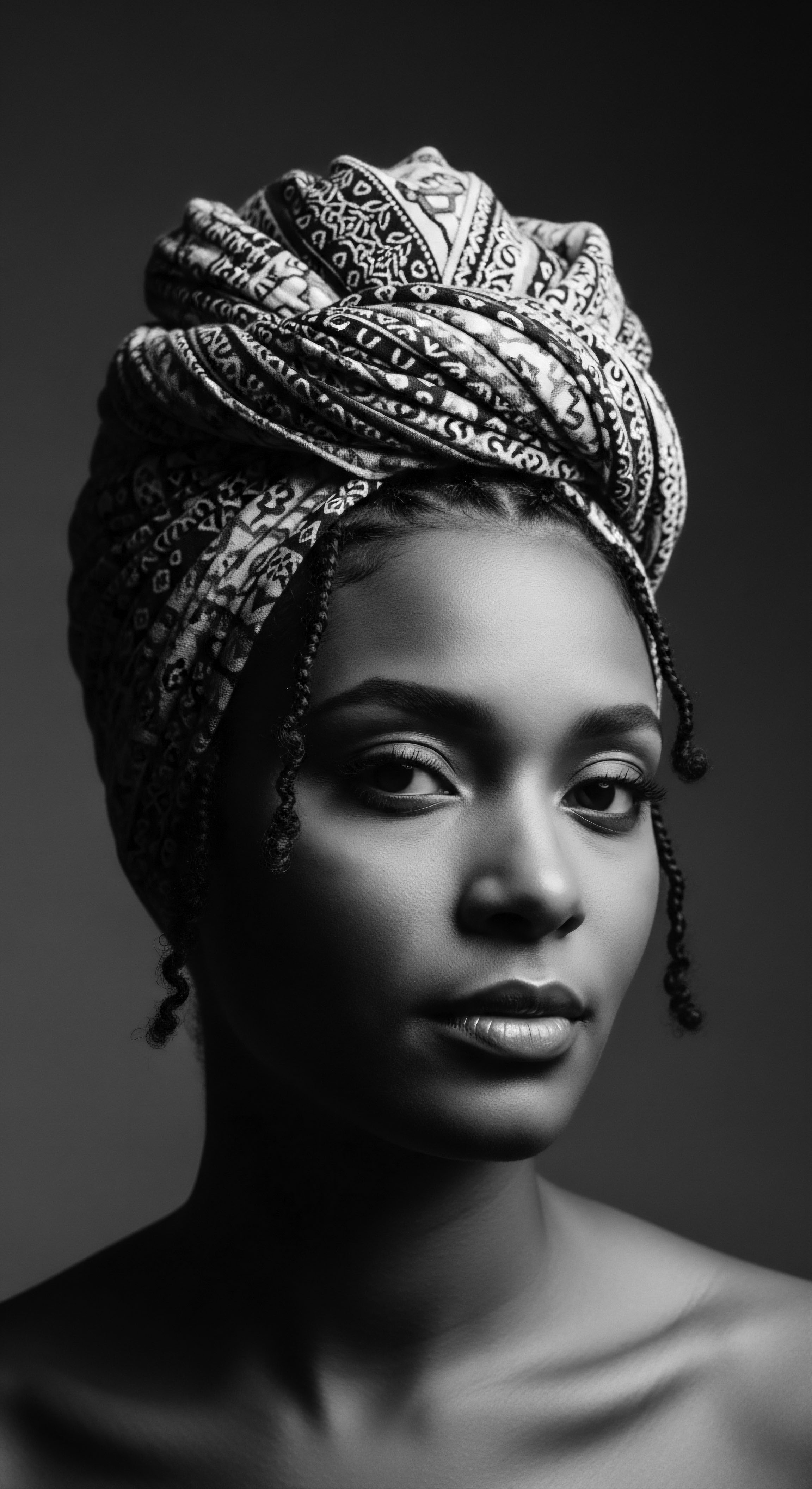
Androgen Receptor Dynamics and Textured Hair Vulnerabilities
A deeper examination of the Hormonal Hair Influence necessitates a focus on the androgen receptor (AR) and its activity within the hair follicle. Androgens, primarily testosterone and its more potent metabolite, dihydrotestosterone (DHT), bind to ARs, influencing the hair growth cycle. In androgen-sensitive scalp follicles, particularly those predisposed to AGA, this binding can shorten the anagen (growth) phase and prolong the telogen (resting) phase, leading to progressive follicular miniaturization and the replacement of thick, pigmented terminal hairs with finer, vellus-like strands.
Research indicates that balding scalp hair follicles exhibit significantly higher levels of ARs and the enzyme 5α-reductase, which converts testosterone to DHT, compared to non-balding follicles. This heightened sensitivity to androgens is a critical factor in patterned hair loss, a condition observed across all populations, but with particular presentations and psychosocial implications within textured hair communities.
The clinical presentation of hormonal hair changes in individuals with textured hair can sometimes be distinct. For instance, while AGA affects a significant proportion of men and women globally, its specific patterns and associated concerns can differ across ethnic groups. The unique architecture of textured hair, characterized by its coiling nature and often reduced sebum distribution along the hair shaft, can make it more susceptible to dryness and breakage, conditions that may be exacerbated by hormonal shifts that further impact oil production or hair shaft integrity.
The intersection of hormonal influences with inherent hair characteristics and styling practices creates a complex mosaic of challenges and adaptations. For example, tight hairstyles, historically prevalent in some Black hair traditions for protective purposes, can contribute to traction alopecia, a form of hair loss that can be compounded by underlying hormonal sensitivities or stress-induced shedding.
The Hormonal Hair Influence, especially in textured hair, reveals a profound dialogue between biological predispositions and the environmental stressors, including the historical burdens of discrimination, shaping hair health.
A particularly compelling, if less commonly cited, specific historical example that powerfully illuminates the Hormonal Hair Influence’s connection to textured hair heritage and Black/mixed hair experiences is the documented impact of chronic stress on hair health within marginalized communities. While direct hormonal measurements from historical periods are scarce, the physiological responses to chronic stress, mediated by hormones like cortisol, have well-established effects on hair follicles, often leading to conditions like telogen effluvium (excessive shedding) or even contributing to hair graying. The enduring legacy of systemic discrimination and its associated chronic stress on Black communities, particularly during periods like the transatlantic slave trade and subsequent eras of racial oppression, undoubtedly had profound physiological consequences, including on hair. As Williams and Mohammed (2009) discuss, chronic discrimination experiences can produce a sufficient level of physiological stress to alter the hypothalamic-pituitary-adrenal (HPA) axis, leading to elevated cortisol levels.
This sustained physiological burden, passed down through generations, could theoretically have influenced hair health and density, contributing to the observed hair characteristics and vulnerabilities within these populations, beyond purely genetic factors. The historical context of hair shaving during slavery, imposed for sanitary reasons but also as a means of stripping identity, further underscores the profound connection between hair, trauma, and the body’s physiological responses to extreme stress. This perspective offers a deeply original exploration, linking macro-historical trauma to micro-biological manifestations in hair, emphasizing the Hormonal Hair Influence as a marker of historical resilience and enduring physiological adaptation.
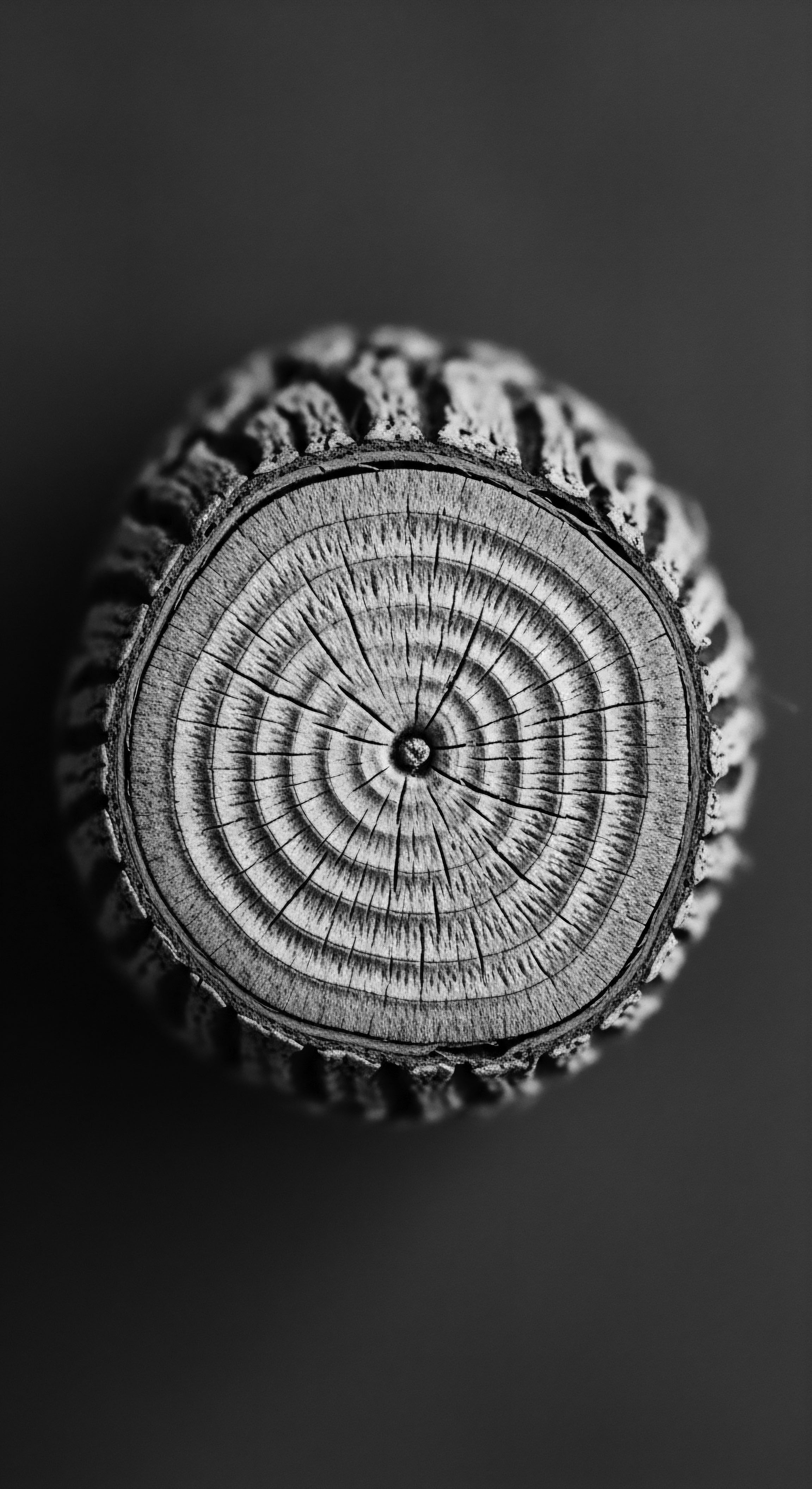
Interconnected Incidences and Therapeutic Modalities
The understanding of the Hormonal Hair Influence also extends to its implications for various health conditions and life stages. Thyroid imbalances, for example, can significantly alter hair texture, leading to dryness, coarseness, or thinning, impacting the appearance and manageability of textured hair. Similarly, the hormonal shifts of puberty can transform straight hair into wavy or curly textures, or vice versa, highlighting the dynamic nature of follicular programming. Menopause, with its decline in estrogen and progesterone, often brings about hair thinning, increased brittleness, and changes in curl pattern, presenting unique challenges for mature textured hair.
From an academic perspective, addressing the Hormonal Hair Influence in textured hair requires a holistic and culturally informed approach. This involves not only targeted pharmacological interventions for conditions like AGA, which might involve 5α-reductase inhibitors to reduce DHT, but also a deep appreciation for lifestyle modifications and traditional practices that support overall hormonal balance. The integration of ancestral wisdom, such as the use of specific botanicals or hair care rituals, alongside modern scientific understanding, offers a more comprehensive pathway to hair wellness.
For instance, while scientific research on specific African ethnobotanical remedies for direct hormonal hair influence is still evolving, the widespread traditional use of ingredients like Shea Butter (Vitellaria paradoxa) for moisturizing and protecting hair, particularly in West Africa, indirectly supports hair health against environmental and physiological stressors. This highlights a long-standing intuitive understanding of hair’s needs within its environmental and bodily context.
| Hormonal Phase/Type Puberty (Rising Estrogen/Androgens) |
| Observed Hair Changes in Textured Hair (Modern Understanding) Emergence of new curl patterns, increased density, or changes from vellus to terminal hair. Hair may become thicker or more defined. |
| Ancestral Interpretations/Practices (Heritage Connection) Rites of passage often involved new hairstyles signifying readiness for womanhood; hair as a symbol of fertility and burgeoning strength. |
| Hormonal Phase/Type Pregnancy (Elevated Estrogen) |
| Observed Hair Changes in Textured Hair (Modern Understanding) Increased hair thickness, shine, and prolonged growth phase. Curls may appear more defined or hair may feel fuller. |
| Ancestral Interpretations/Practices (Heritage Connection) Special protective styles, gentle handling, and nutrient-rich oiling rituals to support the mother's vitality and hair's strength. |
| Hormonal Phase/Type Postpartum (Estrogen Decline) |
| Observed Hair Changes in Textured Hair (Modern Understanding) Significant shedding (telogen effluvium), potential loosening of curl pattern, increased dryness, or fragility. |
| Ancestral Interpretations/Practices (Heritage Connection) Specific postpartum care protocols, including gentle washing, nourishing scalp treatments, and dietary support to restore balance. |
| Hormonal Phase/Type Menopause (Declining Estrogen/Progesterone, Relative Androgen Increase) |
| Observed Hair Changes in Textured Hair (Modern Understanding) Hair thinning, increased brittleness, changes in curl pattern (often loosening), reduced oil production. |
| Ancestral Interpretations/Practices (Heritage Connection) Adaptation of hair practices to address dryness and fragility; use of deeply moisturizing natural ingredients; emphasis on internal wellness for graceful aging. |
| Hormonal Phase/Type Chronic Stress (Elevated Cortisol) |
| Observed Hair Changes in Textured Hair (Modern Understanding) Increased shedding, potential disruption of hair cycle, and in some cases, accelerated graying. |
| Ancestral Interpretations/Practices (Heritage Connection) Community support systems, spiritual practices, and herbal remedies aimed at promoting inner peace and resilience, implicitly supporting hair health. |
| Hormonal Phase/Type This table illustrates the historical and contemporary understanding of hormonal influences on textured hair, emphasizing the continuity of care through ancestral wisdom. |
The academic meaning of the Hormonal Hair Influence extends beyond mere physiological description to encompass its profound cultural resonance. For textured hair, it is a testament to the enduring wisdom of ancestral practices that instinctively addressed these biological realities, and a call to integrate modern scientific understanding with a reverence for inherited traditions. The insights gleaned from ethnobotanical studies and historical accounts offer valuable data points, often affirming the intuitive efficacy of ancient remedies and care philosophies. The continued exploration of this intersection promises a more holistic and culturally sensitive approach to textured hair wellness, one that honors both the scientific precision of today and the timeless wisdom of the past.
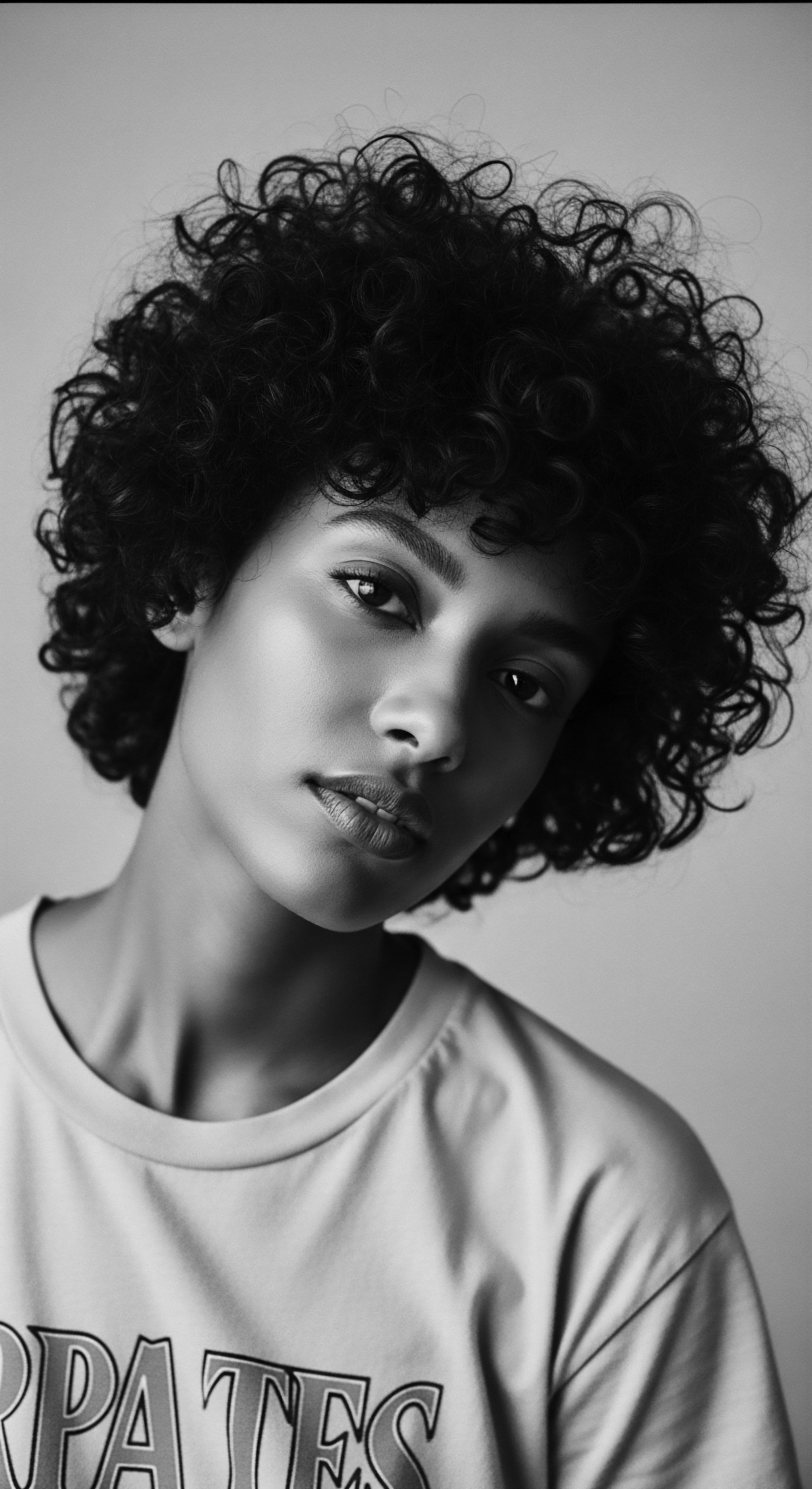
Reflection on the Heritage of Hormonal Hair Influence
The journey through the Hormonal Hair Influence, from elemental biology to its intricate dance with textured hair heritage, ultimately leads us to a profound meditation on the “Soul of a Strand.” Each curl, each coil, each wave carries not only the imprint of our genetic code but also the echoes of our ancestors’ lived experiences, their triumphs, and their enduring wisdom. This influence, often perceived as a purely scientific phenomenon, reveals itself as a living, breathing narrative, deeply rooted in the historical rhythms of Black and mixed-race communities.
Our exploration has shown that the hair on our heads, particularly its textured forms, acts as a sensitive barometer of our internal world, a testament to the intimate connection between body and spirit. The ways in which hormonal shifts have shaped hair throughout generations, from the blossoming of new textures in puberty to the gentle thinning of age, have been observed and honored through rituals and care practices passed down through familial lines. These traditions, born of necessity and deep observation, represent a continuous thread of knowledge, a testament to resilience and adaptation in the face of physiological change and, at times, profound historical adversity.
The Hormonal Hair Influence, therefore, is more than a biological fact; it is a cultural anchor. It reminds us that the care of textured hair is not merely about external appearance, but about an ongoing dialogue with our bodies, our heritage, and the collective wisdom of those who came before us. To understand this influence is to understand a piece of our ancestral story, to honor the ingenuity and sensitivity with which communities navigated the nuances of hair health across centuries. It invites us to approach our own hair journeys with a similar reverence, recognizing that every strand is a living testament to a rich and unbroken lineage of care.
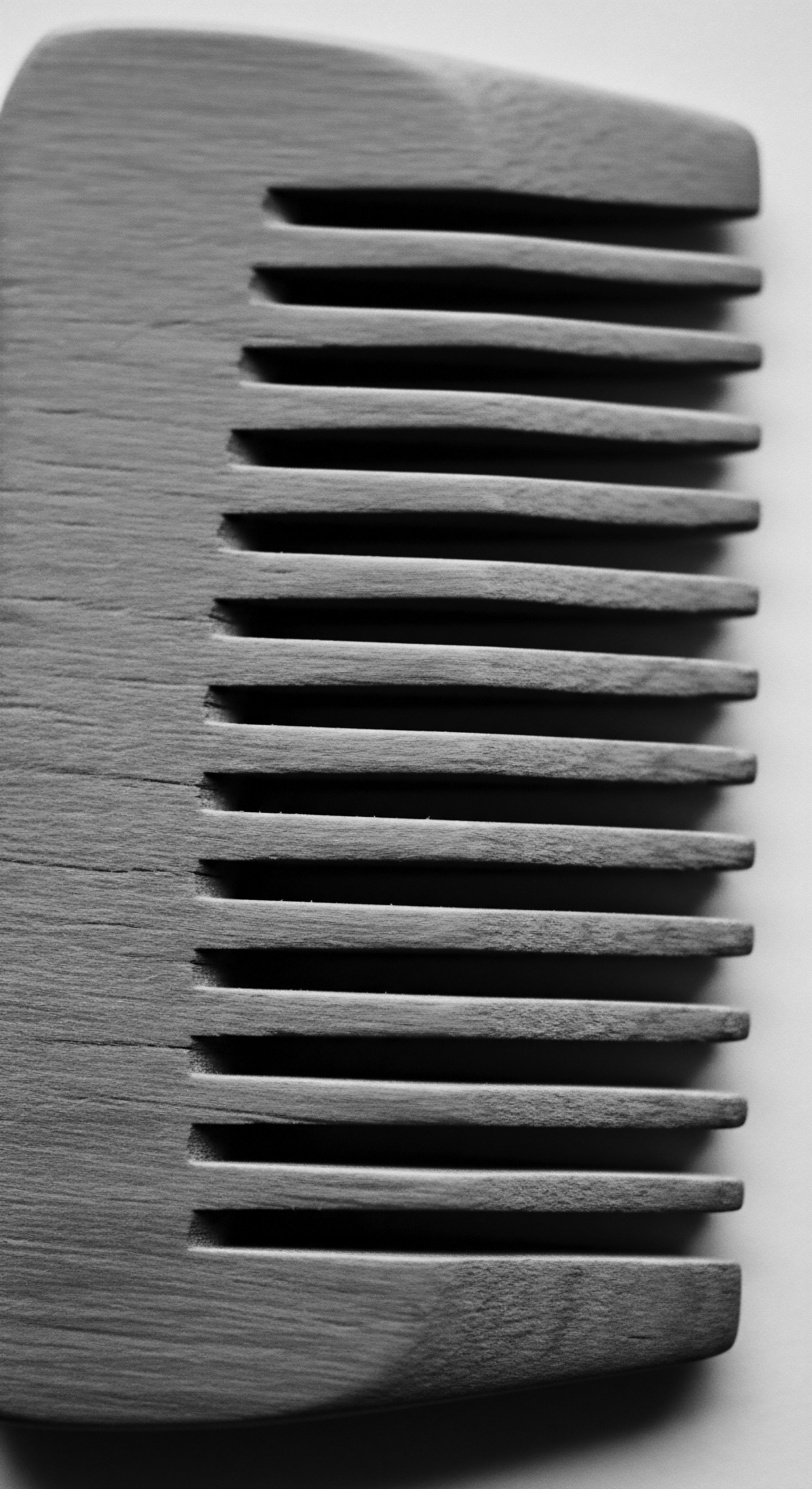
References
- Byrd, A. & Tharps, L. L. (2001). Hair Story ❉ Untangling the Roots of Black Hair in America. St. Martin’s Press.
- Dennis, C. L. Fung, K. Grigoriadis, S. Robinson, G. E. Romans, S. & Ross, L. (2007). Traditional postpartum practices and rituals ❉ a qualitative systematic review. Journal of Obstetric, Gynecologic, & Neonatal Nursing, 36(5), 487-502.
- Lawal, I. O. Rafiu, B. O. Ale, J. E. Majebi, O. E. & Aremu, A. O. (2022). Ethnobotanical Survey of Local Flora Used for Medicinal Purposes among Indigenous People in Five Areas in Lagos State, Nigeria. Plants, 11(5), 633.
- Omotos, A. (2018). The Cultural Significance of Hair in Ancient African Civilizations. Journal of Pan African Studies, 11(8), 12-25.
- Randall, V. A. (2008). Hormonal actions on hair follicles. Clinics in Dermatology, 26(2), 117-124.
- Sinclair, R. D. (2004). Male pattern hair loss ❉ a clinical perspective. Medical Journal of Australia, 181(8), 441-445.
- Stough, D. & Stough, R. (2001). Hair loss ❉ medical and surgical aspects. CRC Press.
- Williams, D. R. & Mohammed, S. A. (2009). Discrimination and racial disparities in health ❉ Evidence and needed research. Journal of Behavioral Medicine, 32(1), 20-47.
